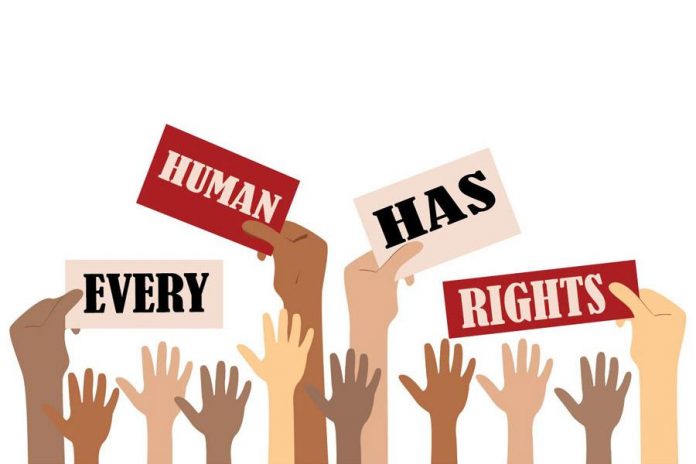This article is written by Sahil Aggarwal, from NALSAR University of Law, Hyderabad. This article explores the issues resulting in concurrent application of the International humanitarian law and the human rights laws for the protection of civilians in an armed conflict.
Table of Contents
Introduction
Cave arts from the New Stone Age, that means 10000 ago, manifested a reality that still continues with us in conventional times, and that reality is armed conflicts. Although the dimensions of the armed conflicts have changed significantly from that period, however, its effects are still beyond the people who fight within those conflicts. The unimaginable brunt of these conflicts affects the past, present, and future of civilians inevitably. For this reason, with the growth of human society, we saw the development of International Humanitarian laws, however, it was not the only concern, the effects of armed conflict go beyond the loss of basic amenities, it affects the dignity and integrity of the people affected by it. These violations found their answers in the form of human rights that represent the basic essence of our humanity. This shows that interaction between humanitarian laws and human rights was also inevitable. As we shall see further, this interaction has not been a very smooth one, since it gives rise to multiple issues that are now the concerns of contemporary international law theorists, scholars, and administrators. In this article, we will explore some of these issues in-depth, but before, it is important to understand the relationship between international humanitarian laws and human rights themselves.
Highlights of the international law of armed conflicts
International Humanitarian Law (hereafter, IHL) or International law of armed conflict, essentially aims to introduce moderation and restrictions against the battlefield conducts that are essentially contrary to these ideals. Perhaps, that is why, more than any other law, it is liable to fail. But, as we shall see, this is not to undermine its importance, rather, emphasize its necessity along with what it has achieved. Since it is mostly driven by humanitarian concerns that limit the adversities of armed conflicts. Essentially speaking, from the most influential work of Hugo Grotius, De jure belli ac pacis (“On the law of war and peace”), to the works of modern-day scholars, the IHL runs as a response to horrifying atrocities committed during the wars.
Among many dimensions of IHL, one fundamental issue remains to be the ‘civilian immunity’, that is, the protection of certain people from the harm of wars. IHL covers, thus, three significant areas, firstly, the protection of those who do not take part or are no longer taking part in the war; secondly, restriction on the means of warfares like weapons; and thirdly, permissible tactics. Accordingly, The International Committee of the Red Cross recognizes two branches in IHL, firstly, the ‘law of Geneva’, which seeks to protect the victims of armed conflict; and secondly, the ‘law of the Hague’ which establishes rights and obligations of the belligerents in the conduct of hostilities.
In the further sections, hence, we will discuss, firstly, the law of Geneva briefly that provides for the protection of civilian in the domain of IHL, secondly, we will discuss the similarities and distinctions between IHL and Human rights Law in order to cull out the issues that surround their concerted application during an armed conflict, thirdly, we will discuss some of the main issues of this interaction between IHL and human rights law, and lastly, it will be emphasized in order to conclude that the issues are required to be resolved soon since they impact the civilian in most cruel ways in terms of their human rights.
The Law of Geneva
The Law of Geneva, for its major part, contains four Conventions, that are, Amelioration of the Condition of the Wounded and Sick in Armed Forces in the Field,1864; Amelioration of the Condition of Wounded, Sick and Shipwrecked Members of Armed Forces at Sea, 1906; Treatment of Prisoners of War, 1929; and Protection of Civilian Persons in Time of War, 1949 (GC 1949). The Fourth Geneva Convention, that is, GC 1949, was the first IHL treaty that dealt specifically with the protection of civilians during armed conflict. The death toll during World War II was one of the major reasons for the development and adoption of such a treaty. Subsequently, however, amidst the process of decolonization, many states were witnessing wars of national liberation as well as civil wars. Moreover, the laws around the conduct of hostilities had also not evolved since the Hague Regulation of 1907. Hence, it was decided to adopt new protocols in addition to the Geneva Convention in 1977.
The GC, 1949 was supplemented by first, Additional Protocol I, 1977 provides for the protection of wounded, sick and shipwrecked civilians and civilian medical personnel. It also contains provisions for humanitarian aid for the civilian population and for the protection of the civilian population against the effects of hostilities. Similarly, Additional protocol II supplements Common Article 3, which provides minimum protection in non-international armed conflicts. Additional Protocol II also applies in the context of non-international armed conflicts between the armed forces of a State and dissident armed forces. It prohibits a direct attack on civilians, collective punishment acts of terrorism, rape, forced prostitution, and indecent assault, etc.
One may ask then, since the law of Geneva protects the civilians in many aspects, then what is the need or relevance of involving human rights discourse in IHL. Perhaps, at the most basic level, one can say that human rights are the set of rights granted at the economic, social, and cultural level, they involve liberties that IHL does not cover in substance, like the right to assembly, right to education, etc. Moreover, essentially speaking, IHL, and human rights law may also mutually reinforce each other to a certain extent. However, in the next section, we will delve into both human rights as well as IHL to cull out the issues that arise in their interaction.
Relationship between human rights law and International humanitarian laws
There is no doubt as to the fact that human rights and IHL inevitably overlap into each other, at infinite points, thus, resulting in multiple issues as well, since it turns out that some rules of both may not be consistent with each other, ultimately affecting the people. There are many examples that emphasize their concurrent application and intricate relationship between both, like in Northern Cyprus, or Iraq, etc. Moreover, the close relationship between human rights law and IHL lies in the fact of their sharing a common ideal, that is the protection of the dignity, health, and integrity of the person. Consequently, their guarantees are identical as well, like the right to life, freedom from torture and cruel treatment, and the protection of economic and social rights. Let us look for some nuanced differences between both of them.
Distinctions between human rights laws and International humanitarian laws
Interestingly, human rights law finds its beginning in humanitarian law itself, which is presently largely associated with the international law governing the justification and conduct of wars. This is perhaps because modern human rights find their roots in the Enlightenment which concerned the relationship between the State and its citizens, thus they formed an internal affair between the government and the subjects. It was after World War II, that human rights were pronounced officially as an international concern, leading to the adoption of the Universal Declaration of Human Rights (UDHR) in 1948. On the other hand, Humanitarian Law was primarily based on the phenomenon of armed conflict that involves relations between two states themselves, hence becoming an issue of the international matter. However, the UDHR is silent about the compliance of its rules in armed conflicts, the conflict grew stronger afterwards with the drafting of human rights treaties. In other words, the IHL applies at the time of armed conflict, unlike the human rights law which should be, in principle, applied at all times.
Another significant difference arises in the terms of ‘people’ they both seek to protect. The IHL fundamentally distinguishes non-combatants (civilians) from combatants. As stated earlier, the law of the Hague mainly deals with individual rights of combatants, however, in some of its provisions, it secures the ‘collective’ rights of civilians. For instance, Article 17 of Laws and Customs of War on Land (HAGUE, II), provides that the prisoners taken may receive full pay that they ought to receive from their own country’s regulations. On the other hand, under Article 46 of the same convention provides that family honours and rights must be protected. On this line, we can see humanitarian laws with respect to civilians protect the community interests as against the human rights laws that they focus more on individual rights.
Thirdly, the IHL binds all the parties to an armed conflict, be it a state party or non-state armed group, for the benefit of everyone who can get affected by their conduct, but human rights laws bind only states and not the non-state armed groups. The reason for this is that most groups of the latter category are unable to carry those obligations, as their functions could not be premised on human rights norms, unlike the Governments. Fourthly, although the IHL and human rights law share common substantive ideals, yet the IHL governs many different issues such as the status of combatants, the legality of specific kinds of weapons. On the other hand, human rights law covers freedom of the press, the right to assembly, to vote, etc. which cannot be covered in the IHL.
Nevertheless, one cannot dispense with the large space where they both interact and complement each other. Because of the aforementioned differences, however, the interplay of IHL and Human rights law remains a subject of much legal attention, as the issue involves the security of civilians’ life. In its statement on the application of human rights in situations of armed conflict, the 1996 Advisory opinion on the legality of the Threat or Use of Nuclear Weapons, the International Court of Justice (ICJ) made three announcements in that respect, firstly, human rights laws are applicable even during armed conflicts. Secondly, it is applicable in situations of conflict, subject only to derogation. Third, when both IHL and human rights law are applicable, IHL is the lex specialis, meaning thereby, for instance, the human right of not to be arbitrarily deprived of one’s life applied in hostilities, however, what constituted an arbitrary deprivation of life must be construed by the applicable lex specialis, that is the law applicable in armed conflict. Similarly, the ICJ emphasized in the case of the Construction of the Wall in the Occupied Palestinian Territory and DRC v. Uganda, human rights treaties continue to apply in wartime.
This settlement by the ICJ has been generally deemed to settle the issue of the interplay between IHL and human rights law. In other words, when human rights law and IHL are in conflict, the latter will prevail, since it specifically deals with armed conflict. However, the contradictions are inevitable, when these laws are applied to the same facts since they represent different circumstances for which they were formulated. Moreover, some scholars point out the use of the phrase lex specialis is itself prone to perusal, since not every situation may be judged on the basis of IHL only.
Issues in the coinciding application of IHL and human rights law
As suggested above, when we purport to apply human rights law and IHL in a specific situation, there have been many opinions as to the applicability of the principle of lex specialis, that seemingly seeks to resolve such conflict between the two. The problem with such conception of IHL as a lex specialis to the human rights law is not that it is an overbroad solution but also that the idea of lex specialis is itself vague, as we shall see further. Below, we will discuss some of the issues that result from the coinciding application of both the laws.
Conflicts between the two states
The simultaneous applicability of both laws means multiple institutions under both IHL and human rights regimes will have to take into account the other’s laws and to act accordingly. For instance, among the human rights treaty bodies, the Committee against Torture is dealing with a form of conduct prohibited under both IHL and human rights law. In this context, firstly, it becomes hard to ascertain which laws are applicable. For instance, as suggested earlier, in the event of an armed conflict between two states, it may not always be directly recognized as a state of war by both states. However, it can still be recognized as an armed conflict. This firstly opens the question of whether every use of armed force in another state’s territory, including its territorial waters and airspace, is necessarily against the state. To apply IHL in such cases, there have to be objective reasons to determine such engagement as an armed conflict. This is usually evidenced by the manifestation of animus belligerendi (it means the intention of the parties in a conflict as to whether the state of the situation they are involved in could be determined as a war or not), which in turn, suggests the possibility of alternative animus. For instance, in the cases of extraterritorial law enforcement which includes action by armed forces against persons or entities in another state that engage in international crimes. An action for self-defence may not necessarily be an armed conflict against another state. An example can be the use of force by the Colombian army against members of the Revolutionary Armed Forces of Colombia in Ecuador. Another dilemma may arise in a situation when a state may try to bring law and order in the occupied territory, it sometimes seems hard to characterize it as an armed conflict.
Further, the idea of armed conflict becomes more complex in the case of internal conflicts. Article 3 common to the 1949 Geneva Conventions refer to the ‘armed conflicts not of an international character’, implying that any armed conflict that any conflict not covered by Common Article 2, is covered by Article 3. However, at the same time, it has been observed that Article 3 was intended to apply to internal conflicts. Hence, the question of what is an armed conflict is complex. Even Protocols of 1977 may not resolve this idea satisfactorily. Hence, there is a possibility of reaching different conclusions on the same set of facts. In this ambiguity, the human rights body or institution will have to address the emanating issues and determine whether IHL must be applied or not. This is perhaps for many reasons, for instance, the State where the conflict happens may deny internationally for political reasons that the situation of armed conflict arose, or maybe not.
Another issue arises in the form of the applicability of which constituent rules of IHL by Human rights institutions after they had ascertained that a situation is an instance of armed conflict. Questions like whether an instance was an international conflict or non-international conflict affect the applicability of the set of rules. The substantive law applicable in different situations is different, hence the issue.
Lex Specialis – the relationship between IHL and human rights laws
As noted earlier, the ICJ had suggested that the IHL may apply in a situation where the IHL and human rights law may apply simultaneously. The full expression is lex specialis derogat legi generali, meaning thereby that the more specific law has precedence over the general law. This, however, does not entirely settle the situation. It is unclear whether it means that the lex specialis prevails over the lex generali, or whether the former may displace the other. In certain cases, it may require the application of both in a mutual manner. For instance, in any case of a gap in the special law, would it be appropriate to refer to general law. In such a situation, would an instance of armed conflict not covered by IHL because of a technicality, can easily be governed by human rights law? This is complex because the IHL and human rights law as discussed above represent different issues at their roots. Moreover, as discussed earlier, the relationship between human rights law and IHL is not exclusively an inter-state affair. Human rights law concerns the state and those within its jurisdiction.
Now, if we consider that the priority should be given to IHL in certain situations, as per the principle of lex specialis. At the same time, the ICJ also suggests the human rights may remain applicable at all times, which means the human rights body should reconcile both IHL and human rights law. So, where the IHL has a limited application on certain common areas like the right to education but does not deal with it as substantially as human rights law, in that situation where IHL is applicable, there can be no violation of human rights standards without the violation of humanitarian standards themselves. It is to say the IHL displaces human rights law, which is contrary to what ICJ suggested. Another difficulty in such a situation may be that should human rights institutions also consider the customary law along with the treaty law in IHL?
Derogation of human rights
Under Article 4(1) of the International Covenant on Civil and Political Rights (ICCPR), it allows states to derogate certain human rights treaties in case of public emergency which threatens the life of the nation. In such a situation, the State has to indicate, through the prescribed channel, that it is seeking to derogate certain rights along with the measure it has adopted to affect those rights and the necessity of taking such measures. The human rights treaties also provide that certain rights remain non-derogable. The Human Rights Committee stated, in General Comment No. 29, that certain derogable rights have a non-derogable core. For instance, the prohibition of arbitrary detention is potentially derogable but it is possible the human rights bodies will treat the right to challenge such detention as non-derogable.
This may give rise to another issue, for instance, when a human rights body dealing with a situation of non-international armed conflict finds that there was no invocation of such derogation by the state, it will apply the human rights in their entirety. In that case, if human rights bodies fail to take into account the IHL, the state may be held responsible for the breach of human rights which might not have been unlawful. It denies the applicability of IHL as a matter of law in those cases.
The extraterritorial application of human rights law
The extraterritorial acts or omissions of the state’s armed forces have been a significant point of interest for the scholars, especially while determining the applicability of human rights law on those actions or omissions. This issue may arise mainly in the context of international armed conflicts. Although some issues of this conflict about the extraterritoriality of human rights law appear to have been resolved, still some are contested by scholars. The issue can be considered in two contexts, first in case of occupation and second, in case of detention beyond national territory.
The ICJ, Human Rights Committee, and the European Courts of Human Rights, have suggested that human rights law applies in the occupied territory in the same way as it applies to the state’s own territory. Under Article 42 of the Annex to the convention of Hague Convention IV, it is provided that the area is deemed occupied when it is ineffective control of the parties. An area, however, may be under the general control of the occupying forces, but the position of the occupying power may be challenged to such an extent to make it impossible for them to enforce its obligation under the IV Geneva Convention. For instance, in Al-skeini v. The United Kingdom, the Court observed that to keep civilian casualties and destruction controlled in the city, the British forces have to tread cautiously, in which situation, they were not in a position to assume responsibilities for health care, education and so on in the territory of Basra. In this situation, even if one may agree that perhaps, the IHL recognizes occupation as consisting of different stages, this idea comes in conflict with human rights law. The issue is that the human rights institutions may apply too rigid a test in these cases. It does not allow the possibility that human rights law could be applicable to the extent that the occupying state can control the situation in the territory. This also suggests that the human right institutions, in some situations may describe a situation as an occupation when it does not get covered in IHL. However, if the IHL is lex specialis, it is presumed that a human rights body may apply IHL to determine if the situation is of occupation.
Another aspect is detention outside the national territory which may also involve the issue of extraterritorial application of human rights. Although it is an accepted position that a state detaining the person outside its territory, however, subjects him to its own jurisdiction. That means human rights law is applicable, however, the issue arises in the context of whether these laws apply only to the treatment of the person in detention or whether it applies to the grounds for detention and the circumstances of the detention regime, such as presenting the detained in front of a judicial officer and his ability to challenge the detention.
This list of issues is, however, not at all exhaustive, since the IHL and human rights law, both involve multiple imperative aspects that may contradict each other, however, because of the undeniable relation between both of them, the clashes need to be resolved as soon as possible.
A civilian amidst the armed conflict
It is, perhaps, impossible to account for the depths of the sufferings of civilians strangled in an armed conflict with no means to food, residence, clothes, water, or poverty. Rather, it cannot be dismissed that the effects of such disrobement of fundamental rights of civilians can be seen throughout their lives. Therefore, it can be said that if the legal protection of the civilian population is to be improved in the future, the issue of applicability of both human rights and humanitarian laws are needed to be addressed promptly. Non-international armed conflict is the present world form the most common form of armed conflict. However, the applicability of human rights laws and IHL fail to reach the desired goal to alleviate those sufferings.
Conclusion
In sum, it can be concluded that human rights are an essential reflection of our humanity. Hence, it becomes indispensable that our laws both acknowledge and resolve the loopholes and challenges provided in this article promptly. The issues however discussed here represent some of the many that arise from the interaction between IHL and human rights, but this may not discourage the stride towards their aim, since they not only provide a legal and other administrative mechanisms to curb such hostilities and disrobement of human rights of civilians during the armed conflict but also represent a concerted effort of the international community towards the alleviation of the sufferings of affected civilians.
References
- https://www.icrc.org/en/publication/0703-international-humanitarian-law-answers-your-questions
- https://heinonline.org/HOL/Page?handle=hein.journals/israel40&div=18&g_sen t= 1 & c asa _token=Jq4ObLnhOZcAAAAA:PoU2CkEZJfvfrLJCcdJyYZ5bZ846DUtSeiWQF09M V 2 l TpY1KarWGKfI06hXvE_YorHpDxvN2ig&collection=journals
- https://www.e-ir.info/2011/07/06/protecting-civilians-in-conflict-human-rights-and-humanitarian-law/
- https://www.icrc.org/en/document/what-difference-between-ihl-and-human-rights-law
- https://www.icrc.org/en/doc/assets/files/other/irrc-871-hampson.pdf
LawSikho has created a telegram group for exchanging legal knowledge, referrals and various opportunities. You can click on this link and join:
 Serato DJ Crack 2025Serato DJ PRO Crack
Serato DJ Crack 2025Serato DJ PRO Crack











 Allow notifications
Allow notifications



